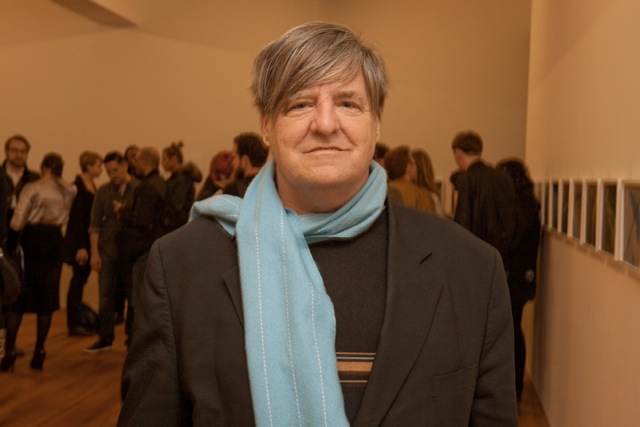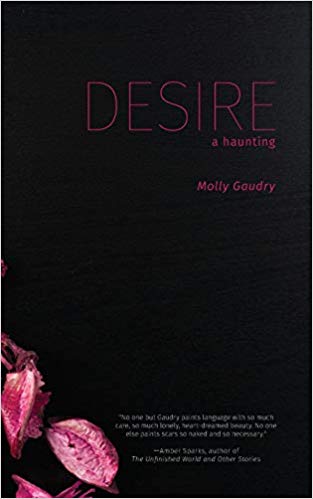
— Cristina Deptula
One risk factor crops up for most of the USA’s deadliest diseases – aging. Can old age be treated, as just another medical condition? And how can we expand our healthspan – the portion of our lives that we’ll spend healthy?
San Francisco State’s University’s Department of Biological Sciences pointed towards some answers to these questions at their twelfth annual Personalized Medicine conference.
Personalized medicine as a concept, is not new. The basic idea goes back to Hippocrates, and modern precision medical tools can enable us to live out his vision of special care for each different patient.
Dr. George M. Martin, of the University of Washington, known as the ‘father of aging research,’ kicked off the day. His lab looks into progeroid syndromes, where people’s bodies age much more rapidly than usual. These are linked to mutations that harm parts of the genome that encode for proteins related DNA repair. Genomic instability and damage is a major pathological mechanism in progeroid syndromes and could be in normal aging as well.
He pointed to the need to look at patients who have only one copy of the genes for these types of recessive syndromes to figure out how their bodies compensate for the faulty gene and avoid showing symptoms. Also, he said we should study people who have antigeroid syndromes, who show less physical change than normal with age.
Dr. David Zarling of ImmunoLongevity Inc., works with small molecule drugs that can reduce the inflammation that can be a root cause of aging-related health problems.
This avenue of therapy shows promise in protecting mice against the negative health effects associated with unhealthy high-fat diets. Treating inflammation can be beneficial for diet-related and digestive conditions because we all have a microbiome of bacteria inside our intestines. Humans have around 100 trillion gut bacteria, representing anywhere from 500-1000 distinct species. Harmful pathogenic bacteria can impair intestinal membrane integrity, causing chronic gut inflammation that can lead to health problems that we associate with age.
Diabetics tend to have more opportunistic gut pathogens and fewer beneficial gut bacteria, pointing to another avenue of research and potential treatment for the condition.
Researchers have developed another new medicine, Tempol, which promotes faster metabolism by making it harder for beneficial gut bacteria to extract energy from the foods we eat. In another part of the body, these small molecule drugs seem to slow age-related macular degeneration in mice.
Dr. James T. Kirkland, with the Mayo Clinic, described how cells can go into a state known as senescence, where they permanently stop dividing and secrete certain substances that are linked to age-related disease. Senescence differs from cell death (apoptosis) because cell metabolism continues. Senescent cells accumulate in adipose fat tissue with aging, especially during our 60s through our 80s and in our skin.
Dr. Kirkland described new therapies known as senolytics, which clear the body of senescent cells that have accumulated after an injury. Developed with the help of big data, senolytic drugs can remove most senescent cells within one day. They have been shown to alleviate Alzheimer’s symptoms in mice, as well as increase bone mass, cardiovascular function and lifespan by up to 36 percent.
The first human trial of senolytics will be for idiopathic pulmonary fibrosis, a severe lung disease.
Drs. Xi Cen (University of Rochester/Stanford) and Anoshua Chaudhari (San Francisco State University) spoke next, on the economics of aging. Older adults are an increasing share of the population in many industrialized countries, and we need to figure out how to afford to care for them, financially and logistically.
More seniors are now living in home and community-based settings, which seems good, although less is known about the quality of care there. There are also sometimes unintended consequences of programs set up to save money on elder healthcare, such as Medicare’s voluntary bundled payments to hospitals for certain medical procedures. This was intended to streamline care by minimizing unneeded subsequent hospitalizations after surgery, but is also now associated with exacerbated racial differences in hospital readmissions after lower extremity joint replacements. Hospitals may now have a financial incentive to preferentially admit patients they believe will be healthier and need less treatment, as they don’t get additional reimbursement for follow-up visits.
Research shows that women go to doctors more often, and that women have more chronic conditions. But men are more likely to get life-threatening conditions and die of them. So there are more older widows now in the population than before, who will need the social support of younger generations. The speakers suggested that industrialized countries with a greater fraction of the population who is elderly allow more migration of young people from other nations who can care for them.
After lunch, Dr. Judith Campisi, of the Buck Institute for Research on Aging and Lawrence Berkeley National Laboratory, explained cellular senescence much more in depth.
Why might we have evolved cellular senescence at all? This state plays several roles in the body: it promotes wound healing, signals when labor should begin, and helps with embryonic development.
As Dr. Campisi reminded us, evolution favors those organisms who can reproduce the most, not necessarily those who have the best post-reproductive quality of life. So people affected by the negative age-related consequences of senescence escaped the culling effect of natural selection.
The Buck Institute has been at the forefront of new therapies that eliminate senescent cells from mice, which seem to be able to prevent chemotherapy-induced toxicity. These drugs can restore Parkinson’s-like motor neuron damage and also regenerate old joints in mice too – but only when stem cells are still present within the appropriate regions of the body. So there’s a time window by which doctors will have to administer the medicine.
Dr. Matthew S. O’Connor of the SENS Research Foundation showed off his team’s research, modified cyclodextrin molecules that can bind to and remove cholesterol and ‘rescue’ aging cells. These molecules are able to treat Niemann-Pick disease in cats in the laboratory and hopefully also atherosclerosis in humans.
Next, Dr. Steven P. Braithwaite of the company Alkahest outlined the promise of plasma transplants from younger mice to older mice in the laboratory. These are shown to improve brain function and help older mice get through mazes faster.
Plasma isn’t so easy to use as a treatment, however. It’s hard to transport, gets contaminated easily, and requires that donors and recipients have a compatible blood type. So, researchers are glad that a partial plasma treatment has similar positive therapeutic effects.
Dr. Barbara Koenig, of the University of California – San Francisco, brought up what seemed the other end of the spectrum from life extension, choices regarding one’s death.
Currently, our medical system favors an open disclosure of information: doctors let patients know they are dying, rather than hiding the truth to preserve hope. We also tend to embrace advance care planning and have a desire to manage our deaths, which Dr. Koenig suggests stems from our Western individualistic mentality.
A recent California law permits ‘aid-in-dying’, drugs that facilitate death. This is legally distinct from euthanasia because terminally ill patients must administer the drugs themselves. Research into the effects of this law shows that patients who choose to obtain prescriptions of this nature are more likely to be educated and wealthy or otherwise hold a relatively privileged position in society.
Dr. Koenig suggests that people who are used to expecting more agency and control over their lives are more likely to request this sort of prescription. Many of these people get a prescription for the drug and never take it, just hold onto it as an option. And these are often the same people who are likely to request radical medical interventions to prolong their lives. So, ‘aid-in-dying’ and dedicated research into longevity may be opposite sides of the same cultural and bioethical coin.
Dr. Evaleen Jones, of Stanford University, spoke next, with the help of colorful hand-drawn slides, replete with trees and sunshine. She advocated a more civilized, and civilian-ized, way to practice medicine, where community health workers were educated and empowered to serve people through providing home care. This system is designed to assist patients on a large scale while also providing a pathway to well-paid employment for the caregivers. The need for healthcare for the aging is great around the world and also in Hawaii, where Dr. Jones is from, and this seems a humane and cost-effective solution.
Finally, Dr. Matt Kaeberlein, of the University of Washington, discussed how to slow aging in pet dogs. The biological process of aging in dogs is similar to that of humans, although dogs age more quickly. Dr. Kaeberlein advocates a focus on slowing aging rather than treating individual diseases, as aging is an underlying risk factor for many deadly canine diseases.
A research grant has recently made possible a large longitudinal study to sequence the genomes of different breeds of pet dogs. Through this, we aim to identify any commonalities among those dogs who tend to die young or those who tend to live longer. The study also involves observing dog microbiomes and behavior/activity levels.
Experiments involving helping out our pets engage people in citizen science. Also, pets share our environment and thus research into their medical needs offers more potential insights for human treatment than looking at lab mice.
So far we know of a gene that controls dog size, and that larger dogs age more quickly. Also, researchers have developed a medicine, rapamycin, that can rejuvenate dog heart and immune function. Five years from now, Dr. Kaeberlein said, he expects veterinarians to have common treatments available to extend our pet dogs’ lifespans.
This year’s Personalized Medicine conference pointed to the frontiers of scientific research into cellular, molecular and genomic therapies for age-related disease. The choice of speakers and topics also reflected concern for how society as a whole could respond with compassion and wisdom to the need to provide care on many levels for an aging population.
More about San Francisco State University’s Department of Biological Sciences and the annual Personalized Medicine conference here.










